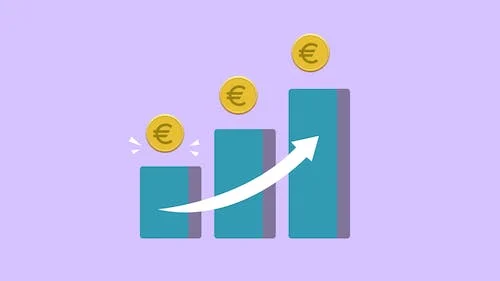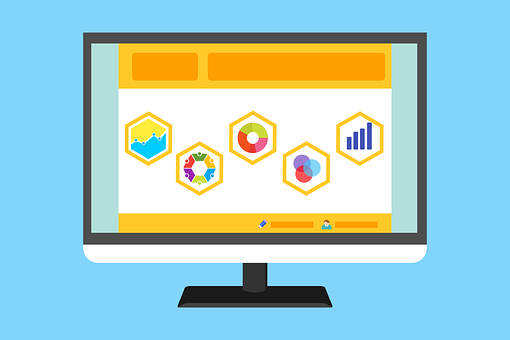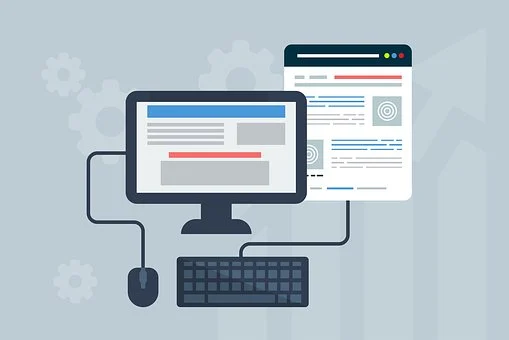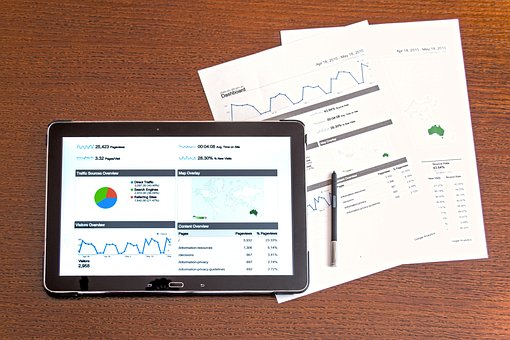We’ll increase conversions by
20-100+%
on your website.
Get a FREE Audit today
See how we can help your business increase conversion rates
What is the Average Bounce Rate of Ecommerce
What Does Bounce Rate Mean?
Bounce rate, an essential metric for website owners, particularly those in e-commerce, offers a window into the level of user engagement and the overall user experience of the website.
A bounce rate, reflecting a high number, could signify various hurdles such as sluggish page load times, shoddy website design, irrelevant content, or a shortage of prominent calls-to-action.
Contrarily, a low bounce rate implies that the website is imparting a favorable experience to users, with pertinent and captivating content that incites them to delve deeper.
However, the bounce rate is not just a general indicator of website performance. It can also be divided and scrutinized through multiple factors, including device type, referral source, or particular pages on the website.
This provides a deeper understanding of the areas that require improvement and assists website owners in enhancing their website’s engagement and conversions.
It is imperative to keep in mind that a high bounce rate does not necessarily imply failure, nor does a low bounce rate imply success.
The perfect bounce rate varies based on the type of website and the goals of the business.
For instance, a landing page designed for a particular promotion may have a high bounce rate, yet if its intention is to drive conversions, a high bounce rate may still be acceptable if the conversion rate is high.
Bounce Rate for Ecommerce
Bounce rate is of paramount significance to e-commerce ventures as it offers a glimpse into the user experience on their website and how efficiently they are retaining and engaging visitors.
Let us delve deeper into the crucial reasons why bounce rate matters for e-commerce:
-
User Engagement: A bounce rate, reflecting a high number, could suggest that visitors are unable to locate what they seek or are disinterested in the content on the website. This could have a detrimental effect on conversion rates and sales.
-
Website Performance: Bounce rate can also act as a gauge of website performance, inclusive of page load times, design, and user experience. Addressing performance-related issues could lead to enhanced engagement and reduced bounce rate.
-
Marketing Efficiency: Bounce rate can be segmented based on referral sources, providing businesses with an understanding of which marketing channels drive the most engaged traffic to their site.
-
SEO: A high bounce rate could also impact search engine rankings, as search engines factor in a site’s ability to retain visitors while determining its relevance and value.
-
Conversion Optimization: By comprehending which product pages boast high bounce rates, businesses can make data-driven decisions on how to enhance their website and escalate conversions.
In conclusion, bounce rate is a vital metric for e-commerce businesses to keep tabs on and optimize, as it sheds light on the user experience on their website and the efficacy of their marketing and conversion optimization endeavors.
1.) Factors affecting Bounce Rate in Ecommerce
A. Website Design and User Experience
The design and user experience (UX) of an ecommerce website hold immense significance when it comes to shaping the bounce rate.
A website that’s crafted with utmost care and impeccable UX design can lead to heightened engagement, low bounce rate, and impressive conversions.
On the other hand, a website with shoddy design and poor UX is bound to receive a high bounce rate and low conversions.
A few design elements that hold immense influence over UX and bounce rate are:
-
Navigation: Simple, user-friendly navigation is indispensable for keeping visitors hooked and reducing bounce rates. Complex or cluttered navigation can cause frustration and lead to quick exits from the website.
-
Content Arrangement: The layout of the content on a website should be aesthetically pleasing, easy on the eyes and with a clear hierarchy of information. Poor content layout can make the website difficult to navigate and result in high bounce rates.
-
Loading Speed: Slow loading times can make visitors lose patience, causing them to leave the site, resulting in a high bounce rate.
-
Mobile Optimization: With the majority of users accessing websites on mobile devices, it’s crucial to optimize the site for mobile viewing. Sites that are not optimized for mobile are bound to result in a negative UX and high bounce rates.
Ecommerce businesses need to make UX design and website design a top priority to improve their bounce rate.
By designing a website that’s visually appealing and has a seamless UX, ecommerce businesses can elevate engagement, reduce bounce rates, and boost conversions.
B. Load Time and Site Performance
Load time and site performance are deemed critical in the arcane calculation of bounce rate for e-commerce websites.
A website that lags or is beset with technical maladies can cause a lamentable user experience and a nauseatingly high bounce rate.
Buckle up, dear reader, as we delve into the intricate ways in which load time and site performance can shape the bounciness of your website:
-
Laggard Load Times: Patience is a virtue, but visitors don’t seem to possess it when it comes to slow-loading pages. They’re likely to bail and result in a spiking bounce rate.
-
Technological Travails: Broken links or error pages can shake the confidence of visitors and induce a high bounce rate.
-
Enormous Page Sizes: Behemoth page sizes can throttle load times, leading to an incline in bounce rate.
-
Slack Server Responses: Slow server responses can also contribute to a rise in bounce rate as visitors tire of waiting for a page to load.
E-commerce businesses must be vigilant in monitoring and optimizing their website to mitigate the impact of load time and site performance on bounce rate.
This can encompass frequent website speed tests, utilizing website optimization tactics such as image compression, and relying on a dependable hosting service with brisk server response times.
In conclusion, a fast-loading and well-performing website is indispensable in reducing bounce rate and enhancing the user experience for visitors to an e-commerce site.
By prioritizing website performance, e-commerce businesses can augment engagement, decrease bounce rates, and ultimately escalate conversions.
C. Relevance and Quality of Content
The relevance and quality of content are paramount in determining the bounce rate of e-commerce websites.
Visitors are likely to stick around if they find the content to be relevant and of high caliber. On the flip side, irrelevant or low-quality content can result in a high bounce rate and inadequate conversions.
Let’s delve into the enigmatic ways in which content relevance and quality can impact bounce rate:
Relevance: Visitors tend to be engaged with content that aligns with their interests or needs. Irrelevant content can cause potential customers to lose interest and exit the site hastily, leading to a high bounce rate.
-
Quality: High-quality content that is well-written, informative, and captivating can hold the attention of visitors and reduce bounce rates. Poorly written or unengaging content can cause visitors to lose interest and depart the site rapidly.
-
Product Descriptions: In-depth, high-quality product descriptions can assist visitors in making informed purchasing decisions, reducing bounce rates and augmenting conversions.
-
Blogs and Articles: Relevant, informative blogs and articles can help establish a website as a trustworthy source of information, improving engagement and reducing bounce rates.
E-commerce businesses must concentrate on creating high-quality, relevant content to improve the user experience and reduce bounce rate.
This can include updating the site regularly with fresh content, conducting keyword research to guarantee the content is optimized for search engines, and utilizing customer feedback to refine content relevance.
In conclusion, by investing in the relevance and quality of their content, e-commerce businesses can enhance engagement, reduce bounce rates, and increase conversions.
D. User Demographics and Behaviour
User demographics and behavior play a substantial role in determining bounce rate for e-commerce websites.
Grasping the demographics and behaviors of their target audience can aid e-commerce businesses in creating a website that is optimized for their needs and preferences.
2.) Puzzling Average Bounce Rates in the Ecommerce Domain
A. Unpredictable Industry Averages
The average bounce rate in the ecommerce world is a labyrinthine concept, with no set standard that applies universally.
The average may fluctuate based on the type of ecommerce website and the industry it caters to.
Despite the ambiguity, a bounce rate in the 40-60% range is considered normal for ecommerce websites.
Bafflingly, a lower bounce rate is regarded as desirable for ecommerce websites, as it signifies that site visitors are actively interacting with the site and have a higher chance of making a purchase.
If the bounce rate surpasses 60%, it may be an indication of a poor user experience, sluggish page loading speeds, or irrelevant content.
Ecommerce businesses must constantly monitor their bounce rate and compare it with industry averages to assess the effectiveness of their website and pinpoint areas for improvement.
By enhancing the user experience and reducing bounce rates, ecommerce businesses can elevate engagement, increase conversions, and ultimately, achieve success.
In summary, while the average bounce rate in the ecommerce domain may be unpredictable, it’s crucial for ecommerce businesses to continually monitor their bounce rate and aim for a rate as low as feasible, to enhance engagement and conversions.
B. Factors that Influence the Average Ecommerce Bounce Rate
Multiple factors can influence the average bounce rate for ecommerce websites, including:
-
Website Design and User Experience: A well-designed website, with a user-friendly interface and clear navigation, can help reduce bounce rates and improve engagement.
-
Load Time and Site Performance: Slow loading speeds can result in high bounce rates, as visitors are likely to lose interest and quickly exit the site.
-
Relevance and Quality of Content: High-quality, relevant content can reduce bounce rates and improve engagement.
-
User Demographics and Behavior: Understanding the target audience’s demographics and behavior can help ecommerce businesses create a website optimized for their needs and preferences.
-
Industry: The average bounce rate can vary depending on the type of ecommerce website and the industry it operates in. For instance, a fashion ecommerce site may have a lower bounce rate compared to a technical product ecommerce site.
-
Marketing and Advertising: Effective marketing and advertising strategies can drive targeted traffic to the website, reducing bounce rates and enhancing engagement.
Ecommerce businesses must continually monitor their bounce rate and examine the factors that may be affecting it. By comprehending the impact of these factors, ecommerce businesses can make necessary modifications to improve the user experience, reduce bounce rates, and increase conversions.
In conclusion, there are numerous factors that can influence the average bounce rate for ecommerce websites, and it’s vital for businesses to continuously monitor and analyze these factors to elevate engagement and increase conversions.
C. Variations based on Device and Channel
The bounce rate can vary based on the device and channel used to access an ecommerce website, including:
-
Device: Bounce rates can differ between desktop, tablet, and mobile devices. Mobile devices generally have higher bounce rates due to smaller screen sizes, limited navigation options, and slower loading speeds.
-
Channel: Bounce rates can also vary based on the marketing channel used to drive traffic to the website. For example, traffic from paid search campaigns may have a higher bounce rate compared to organic search traffic.
Ecommerce businesses must continuously monitor bounce rates across different devices and channels to understand how user behavior may differ and identify areas for improvement.
In conclusion, by closely monitoring and analyzing bounce rates across various devices and channels, ecommerce businesses can create a superior user experience, enhance engagement, reduce bounce rates, and ultimately, increase conversions
3.) Optimizing Bounce Rates for Ecommerce
A. Transforming Website Design to Foster Engagement
Transforming website design to foster engagement is a crucial step for reducing bounce rates and enhancing the user experience for e-commerce websites. Here are a few strategies to achieve this objective:
-
Streamline Navigation: Ensure that visitors can effortlessly find what they are searching for by presenting clear and intuitive navigation.
-
Enhance Page Loading Speeds: Optimize images, select a fast and dependable hosting provider, and minimize the utilization of plugins and heavy scripts to reduce page loading times.
-
Emphasize Visually Stimulating Elements: Integrate high-quality images and videos to boost the visual appeal of the website and hold visitors’ attention.
-
Generate Relevant and High-Quality Content: Offer valuable, relevant content to visitors to keep them engaged with the website.
-
Cater to Mobile Users: Optimize the website for mobile devices to enhance the user experience and decrease bounce rates among mobile visitors.
-
Ensure Accessibility: Make the website accessible to all visitors, including those with disabilities, to improve engagement and reduce bounce rates.
By following these best practices, e-commerce businesses can create a more seamless user experience, reduce bounce rates, and boost engagement, resulting in increased conversions.
Ongoing monitoring and analysis of website design and user experience can help businesses continually refine and enhance their strategy.
B. Elevating Site Performance and Load Time
Elevating site performance and load time can play a crucial role in reducing bounce rates and fostering engagement for e-commerce websites. Some strategies to achieve this goal include:
-
Opt for a Fast and Reliable Hosting Provider: Select a hosting provider with fast servers and a dependable network to guarantee speedy page load times.
-
Limit Plugin Usage: Utilize plugins sparingly and only choose those that are essential for website functionality.
-
Image Optimization: Reduce the size of images to improve page loading times and engage visitors.
-
Deploy a Content Delivery Network (CDN): Use a CDN to distribute content and reduce page loading times for visitors from various regions.
-
Enable Browser Caching: Store commonly used files in visitors’ browser cache to reduce page loading times for repeat visitors.
-
Minimize the Use of Heavy Scripts: Limit the utilization of heavy scripts and CSS to reduce page loading times and enhance the user experience.
By executing these best practices, e-commerce businesses can enhance site performance and load times, resulting in reduced bounce rates and increased engagement.
Regular monitoring and analysis of website performance and load times can help businesses continually refine and improve their approach.
C. Providing Relevant and Valuable Content
Providing relevant and valuable content is a crucial aspect of reducing bounce rates and fostering engagement for e-commerce websites. A few strategies to achieve this objective include:
-
Know Your Audience: Gather data on your target audience to understand their needs, preferences, and behaviors.
-
Offer Informative Content: Provide informative information about products, services, and industry topics to engage visitors with the website.
-
Adopt Clear and Concise Language: Utilize clear and concise language that is easy to understand and holds visitors’ attention.
-
Detailed Product Descriptions: Offer comprehensive and informative product descriptions to help visitors make informed purchasing decisions.
-
Provide Supportive Resources: Offer helpful resources, such as guides, tutorials, and FAQs, to support visitors and keep them engaged with the website.
-
Regular Content Updates: Continuously update and refresh website content to engage visitors and reduce bounce rates.
By providing relevant and valuable content, e-commerce businesses can foster engagement.
4.) Continuous Optimization and Monitoring
A. Regular analysis of website performance and visitor behavior
The performance analysis of e-commerce websites and the comprehension of visitor behavior patterns is a pivotal elements in curbing unsettling bounce rates.
By persistent monitoring of critical metrics like bounce rate, session duration, pages per session, and conversion rate, organizations can unveil room for improvement and make data-driven decisions, keeping pace with the fast-evolving industry trends and enabling their website to reach its full potential.
Instruments such as Google Analytics, heat mapping technology, and A/B testing provide valuable insights into the behavior of visitors and assist companies in comprehending the successful elements and what needs improvement.
By conducting regular performance analysis and visitor behavior assessments, companies can make informed decisions regarding alterations in website design, content, and user experience, elevating engagement and reducing bounce rates.
B. Continuous refinement and improvement
The art of reducing bounce rates for e-commerce websites is a never-ending pursuit, requiring unceasing attention to website performance and visitor behavior. By meticulously scrutinizing key metrics, such as bounce rate, time on site, pages per session, and conversion rate, businesses can quickly identify areas for improvement and make informed decisions that drive success.
With the aid of advanced tools, like Google Analytics, heat mapping software, and A/B testing, businesses can delve into the depths of visitor behavior, uncovering invaluable insights into what is working and what is not.
This ongoing analysis enables businesses to stay ahead of industry trends and changes, continuously refining and optimizing their website to provide an engaging, seamless experience for their customers, ultimately reducing bounce rates.
C. Staying ahead of industry trends and changes
Keeping abreast with the current shifts and advancements in the dynamic ecommerce industry is imperative for businesses in their pursuit to lower bounce rates and optimize their online platforms. Using professional services for conversion rate optimization is also a great way to keep up with the best practices.
With the ecommerce sector rapidly transforming, it is crucial for businesses to be nimble and responsive, striving to remain ahead of the competition. Staying ahead of industry trends and changes guarantees that a business’s website is current, relevant, and captivating for their specific target audience.
One approach to staying ahead of industry trends and changes is through continuous surveillance of website performance and visitor behavior.
This provides businesses with the opportunity to pinpoint areas for enhancement and make data-driven decisions that would improve user experience, ultimately leading to a decrease in bounce rates.
Conclusion
A. Summary of Key Points
The intricacies of mitigating bounce rate in e-commerce websites are multi-faceted and require a nuanced approach.
To understand the concept of bounce rate, it is crucial to acknowledge that it represents the fraction of website visitors who abandon the site after merely viewing a single page.
A high bounce rate can be a harbinger of various factors such as lackluster website design, sluggish page load speed, inadequate or low-quality content, or an absence of relevance between the website offerings and the visitor’s needs.
Enhancing website design and user experience, augmenting site performance and load times, curating relevant and premium content, and comprehending user behavior and demographics are pivotal in reducing bounce rates and fostering engagement.
The average bounce rate is impacted by various factors including but not limited to industry, device, and channel, hence a thorough analysis is imperative.
By continuously monitoring and evaluating website performance, content, and visitor behavior, e-commerce businesses can iteratively refine their approach and reduce bounce rates, leading to enhanced conversions, customer loyalty, and ultimately, success.
B. Final Thoughts on Average Bounce Rate for Ecommerce
The cruciality of bounce rates in gauging the prosperity of e-commerce websites cannot be overstated.
A skyrocketing bounce rate is a harbinger of underlying problems in website design, functionality, content, or its conformity with the envisioned clientele.
To mitigate bounce rates and escalate user engagement, e-commerce enterprises need to direct their efforts towards renovating the website’s aesthetics and user interface, boosting site speed and performance, delivering germane and superior content, and comprehending the user demographics and behavior patterns.
Continuously monitoring and evaluating website performance, content, and user behavior can aid businesses in refining their strategies and fine-tuning their websites for maximal success.
By embracing these strategies, e-commerce businesses can bring down their bounce rates and escalate conversions, customer allegiance, and overall success.


























